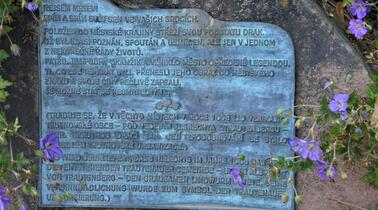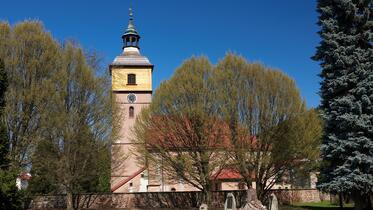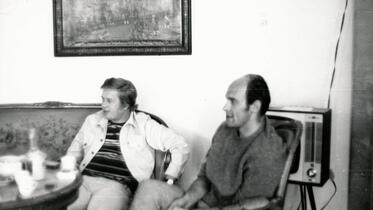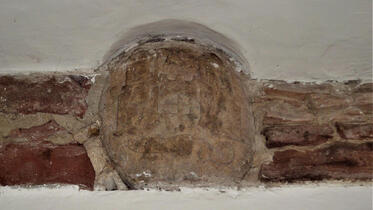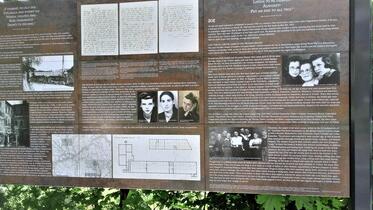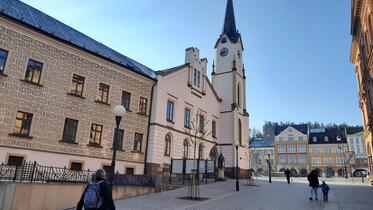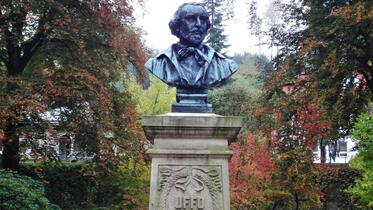Trutnov in the centuries – pieces from history
Some historical events are unique to Trutnov and cannot be found anywhere else. Other stories have become part of the great arc of history and can be read about in textbooks. Among the oldest and rarest ones are the Old Trutnov legends, the generally known historical act is Prussian-Austrian war of 1866 and the victory of the Austrians in the battle of Trutnov, as well as the origins of large spinning mills and the expansion of the textile industry. Centuries old fragments and short notes are mentioned further on.
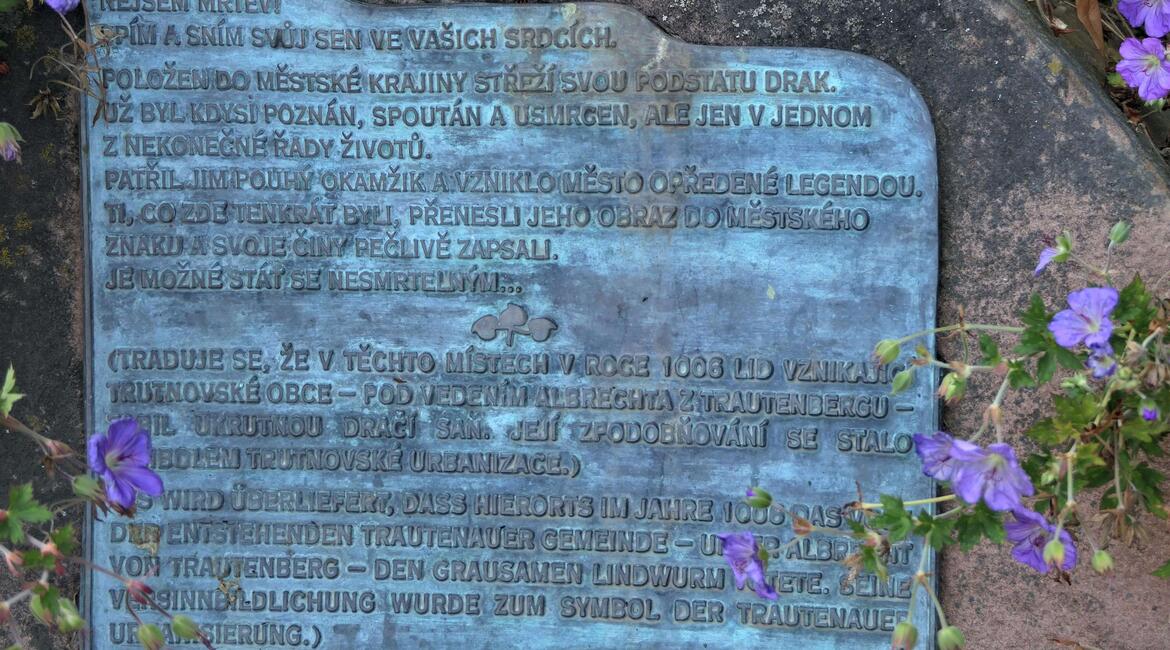
11th century
At the very dawn of the city's history, there is a legend about the killing of a dragon. The oldest Trutnov legend is dedicated to the event which was to take place in 1006. The dragon is the central figure of the city emblem.
At the time of the Czech national revival, the legend was retold, and is illustrated in the lunette no. VIII of Mikoláš Aleš at the National Theatre in Prague.
12th century
At that time, the slopes of the Krkonoše Mountains were covered with almost impenetrable forests, which, however, were cut through by routes in some places. One of the oldest and most important one was called Trutnovský Route and connected Prague with Wrocław.
13th century
The first written mention of Trutnov, originally the settlement of the river Úpa, comes from this period thanks to Idík of Úpa document from the Švábenicova family, which confirms the donation of some local properties to the church order called “Zderazští křížovníci”.
14th century
At the end of the 13th century, in the midst of the work, the Swabian family disappeared without our knowing the reasons. Soon, Dvorsko merged with Trutnovsko and a manic region was created, named after Trutnovsko. The town became a royal town.
The church of St. Wenceslas in Horní Staré Město, now part of Trutnov, is documented in 1313.
15th century
King Wenceslas IV gave Trutnov to his second wife Sophie of Bavaria. This brought Trutnov into the community of Royal dower towns, where it has remained to this day, with some interruptions.
One of the predecessors of Master Jan Hus, the Zderaz crusader, preacher and poet Johlín of Vodňany, worked in Trutnov. Thus, from 1421 Trutnov was in the hands of the Hussites, on whose side it sided in the fatal battle of Lipany in 1434.
16th century
In one of the most prosperous periods of the town development at the turn of the Middle Ages and the Modern Age, Simon Hüttel created his chronicle, describing the history of his hometown Trutnov from 1484 to 1601. The chronicle records old legends, including the legend called the Killing of the Dragon.
The first mention of the paper mill establishment in Trutnov comes from 1505, one of the oldest in the Czech Republic.
In 1517, the production of counterfeit coins was discovered in the cellar of the castle.
17th century
Czech traveller, cartographer and missionary in South America Samuel Fritz was born in Trutnov in 1654. In addition to being the author of the first detailed map of the Amazon, his life as a missionary had enormous influence on many Amazon tribes and his civilization work is immeasurable and even more valuable because he renounced violence during his missions.
This century was not very favourable for Trutnov. After the defeat in the battle of Bílá hora, the town property was confiscated. The city was twice conquered by the Swedes, who also demolished the castle, and the work of destruction was subsequently completed by the imperial army and furthermore there was a plague outburst.
18th century
Emperor Joseph II. visited Trutnov region four times but of which Trutnov only twice. For the first time in 1766, when he spent only a few hours here. In 1771 he inquired about the wellbeing of the population and the causes of misery. He then visited the Trutnov region twice more, in connection with the so-called Potato War - the fourth War of the Bavarian succession (1778-1779).
The first post office was built in Trutnov. But there were also bloody clashes between the rebellious peasants and the imperial army.
19th century
The revolutionary year of 1848 in Trutnov is inextricably linked with the poet, the local native Uffo Horn, who recruited the population here and joined the Prague uprising. Johann Faltis, one of the richest Europeans, built the first spinning mill in Trutnov and thus started a huge expansion of the city. But disasters followed again. In 1861, almost 90% of the city disappeared in flames. In 1866, the Austrians won the battle of the Austro-Prussian war here, but at the cost of immeasurable casualties. At the end of the century, a most devastating flood swept through Trutnov.
20th century
The Taube plane (the plane called the dove) brought world fame to the Trutnov designer Igo Etrich. In his recollections of his childhood in Trutnov, the writer Josef Mühlberger writes charmingly about the promenade that took place in the square every Sunday. As the German war threat escalated, a concrete fortification began to emerge including the Stachelberg fortress but unfortunately the works were never completed. On the contrary, concentration camps were established here. Today, one of them is commemorated only by the memorial plaque in Libeč.
Václav Havel, a well-known author and later the president of the Czech Republic worked here in the local brewery as a labourer and based on his experiences wrote his famous play called Audience, describing this episode of his life.
21st century
History is yet to come.

